In this scene from HID FROM OUR EYES, Chief of Police Russ Van Alstyne is checking out an abandoned house that may have seen some recent activity. I set this during a pleasant summer afternoon, but I may go back and recast it at night if I want to give the moment more of an ominous edge.
He
decided to check out the old Cunningham house himself. He  might have
sent one of his officers, but it was on the way to his mom's and he
could stop in and assure Mrs. Guthrie that no, the farmhouse up the
road wasn't being used as a drug depot, or biker gang headquarters,
or brothel. Actually, that last was a possibility, in that some
teenagers might have discovered the shuttered house was the perfect
sheltered spot to play a little slap-and-tickle.
might have
sent one of his officers, but it was on the way to his mom's and he
could stop in and assure Mrs. Guthrie that no, the farmhouse up the
road wasn't being used as a drug depot, or biker gang headquarters,
or brothel. Actually, that last was a possibility, in that some
teenagers might have discovered the shuttered house was the perfect
sheltered spot to play a little slap-and-tickle.
 might have
sent one of his officers, but it was on the way to his mom's and he
could stop in and assure Mrs. Guthrie that no, the farmhouse up the
road wasn't being used as a drug depot, or biker gang headquarters,
or brothel. Actually, that last was a possibility, in that some
teenagers might have discovered the shuttered house was the perfect
sheltered spot to play a little slap-and-tickle.
might have
sent one of his officers, but it was on the way to his mom's and he
could stop in and assure Mrs. Guthrie that no, the farmhouse up the
road wasn't being used as a drug depot, or biker gang headquarters,
or brothel. Actually, that last was a possibility, in that some
teenagers might have discovered the shuttered house was the perfect
sheltered spot to play a little slap-and-tickle.
There
was no car at the end of the long drive, but the house had clearly
been opened recently. Several windows were propped open with
squared-off sticks, and old sun-faded drapes were puffing and
flapping in the warm summer wind. One of the front steps had been
pried clean off, the punky boards tossed in the grass next to a
hammer and a can of nails. Russ tested the step above before putting
his weight on it. The porch planking had also been decimated, empty
spaces gaping, a hand saw left near the edge. Russ could see fresh
cuts where someone had been sawing off the ragged, pulpy ends of the
still-intact boards.
Balanced
between the gaps, he knocked on the door. No answer. He tried the
handle. It turned. He swung the door open onto a wide center hallway
that was a hell of a lot cleaner than it should have been in a house
that had been empty for over a decade.
Either
the place was the hangout of a gang of super-neat Girl Scouts, or it
had been sold. He'd tell Mrs. Guthrie and she could come over with
one of her god-awful pies and meet the new folks. When he got back to
town, he'd double check with Roxanne Lunt – if the Realtor hadn't
sold the property herself, she'd know who had.
He
was stepping out of the house, watching his steps to keep from
falling through, when he heard the voice.
“Hey,
there. Find what you were looking for?”
Russ
almost stumbled. He glanced up just long enough to see  an old man in
jeans and a plaid shirt. Keeping his eyes on his feet, he crossed the
remains of the porch. “Sorry to trespass. Your neighbor up the road
saw some activity and asked us to check it out.” He jumped off the
steps and headed toward the man. “I'm Russ Van Alstyne, chief of--”
The old man was grinning at him. Washed-out blue eyes, heavy grooves,
thick-set shoulders - “Chief Liddle!” Russ felt himself
straightening like a rookie at parade drill.
an old man in
jeans and a plaid shirt. Keeping his eyes on his feet, he crossed the
remains of the porch. “Sorry to trespass. Your neighbor up the road
saw some activity and asked us to check it out.” He jumped off the
steps and headed toward the man. “I'm Russ Van Alstyne, chief of--”
The old man was grinning at him. Washed-out blue eyes, heavy grooves,
thick-set shoulders - “Chief Liddle!” Russ felt himself
straightening like a rookie at parade drill.
 an old man in
jeans and a plaid shirt. Keeping his eyes on his feet, he crossed the
remains of the porch. “Sorry to trespass. Your neighbor up the road
saw some activity and asked us to check it out.” He jumped off the
steps and headed toward the man. “I'm Russ Van Alstyne, chief of--”
The old man was grinning at him. Washed-out blue eyes, heavy grooves,
thick-set shoulders - “Chief Liddle!” Russ felt himself
straightening like a rookie at parade drill.
an old man in
jeans and a plaid shirt. Keeping his eyes on his feet, he crossed the
remains of the porch. “Sorry to trespass. Your neighbor up the road
saw some activity and asked us to check it out.” He jumped off the
steps and headed toward the man. “I'm Russ Van Alstyne, chief of--”
The old man was grinning at him. Washed-out blue eyes, heavy grooves,
thick-set shoulders - “Chief Liddle!” Russ felt himself
straightening like a rookie at parade drill.
“Nice
to see you again, Russell.” Liddle shook his hand. “Nice to see
you in the uniform. Suits you.”
What sort of fictional settings have you felt revealed the characters?






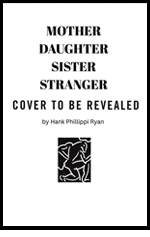
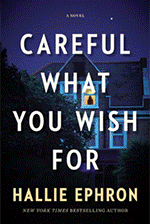
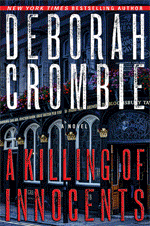
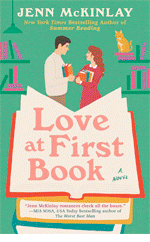

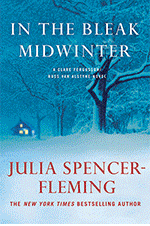
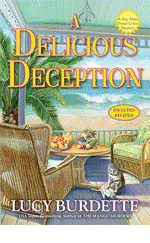
There’s always an aspect of unexpectedness in your stories that captures the reader and draws them in . . . didn’t expect Russ to find Chief Liddle, but then I have learned to expect the unexpected . . . . Can’t wait to see how it all turns out . . . .
ReplyDeleteI’ve always enjoyed the descriptions in your stories, and this excerpt is no exception, but “the hangout of a gang of super-neat Girl Scouts” just cracked me up!
ReplyDeleteThis is so great to read! Thanks for sharing, Julia.
ReplyDeleteYES, setting is an extension of character. A character's bedroom, car, what's in their refrigerator... all aspects of setting tell so much about the person who inhabits.
And can I just say: Great house! Houses are always the essential aspect of setting in my books.
First..."Suits you." Ha! Next, thanks for sharing your insights and showing how delicious your writing is even in little bits.
ReplyDeleteHave you ever read Sarah Waters's The Little Stranger? The house is a character in and of itself....
ReplyDeleteWonderful Julia--now get back to that computer and finish it so we can read the whole thing!!
ReplyDeleteDragonwyck, Manderley, and Wuthering Heights... settings can often set one off on a journey of imagination.
ReplyDeleteOK - once again I CAN'T WAIT to read this book!! Do we have an ETA yet?
ReplyDeleteJane,
ReplyDeleteNo ETA yet. I need to print out Lucy/Roberta's comment and tape it to the top of my laptop for inspiration!
Oh, Julia, I do so love Russ and your descriptions and everything about your books. I think your daytime setting works beautifully, as it allows Russ to observe so much more than he could at night, allowing the reader to observe and take it all in, too. I could easily imagine seeing curtains flutter in the breeze. Your physical descriptions are always an integral part of my enjoyment in reading this series, and they even led me on a detour during my trip to Niagara Falls last fall to see a bit of your amazing Adirondacks, eating lunch at a lodge on Sacandaga Lake. You have a great gift of description, Julia, and I am so happy to reap the benefits of it.
ReplyDeleteI think Hallie summed it up nicely, that the setting reveals the person. And, Hallie, your houses are most interesting. I am a big fan of settings taking on a character role themselves, too.
Oh, just a quick personal note about setting. I'm currently reading The River of No Return by Bee Ridgway, and I have had the nicest setting surprise ever in my reading. I had never seen the village of my ancestors in England mentioned in all of my many book reads set in England, but to my great surprise and pleasure, Stoke Canon is the village next to the main character's estate. Ah, so sweet.
Julia, I agree with Kathy--love the daytime setting. The house immediately becomes a character--and now I want to know why and what happens and who's been in it. So hurry up with the book, please!!!
ReplyDeleteSo agree about daytime! and that was your instinct. It can still be ominous--or changing from ominous to law-abiding, just like a cop would do..maybe...without the loaded nighttime element.
ReplyDeleteLove that he straightens..xoxoo You rock..
I think it's great. I can't wait to read! I love all your books; I love the Episcopalian theme since I am one!
ReplyDeleteThank yo, ladies, for sharing so much of your process and your work. I'm anxiously looking forward to reading all of these soon-to-be releases.
ReplyDeleteI love location. I often check google maps for places in your books (especially Deb's.)
I think a great example of a location being a character is the Bishop House in Deb Harkness' A DISCOVERY OF WITCHES. But so is the Notting Hill home of Gemma and Duncan and Claire's church.
Setting that at night would add a level of suspense but the detail you've documented would be missing. IMHO
Wonderful, Julia! Now get back to work! I do love Russ, so please keep that a daytime scouting trip. You know his history of stepping in holes and what ensues.
ReplyDeleteI just have to say that Julia Spencer-Fleming is the master.
ReplyDeleteAnd what is more mysterious than an old house and all its history?
It would be really creepy at night.
Julia, I Love that we are introduced to the house in the daytime. It's character can change with the light. I think it would be great to see the house his participant more than prop. Now I'm afraid if we talk about it too much... xo
ReplyDeleteYes, setting is so important. I happen to be on a binge of Margaret Truman's crime novels - she wrote over 22 - and I never appreciated them or her before. I am amazed now at what a good writer she was!!! And her settings - as well as character and enormous details- are marvelous! Thelma Straw in theCrime Factory called Manhattan NYC
ReplyDeleteI think some people are born with a a strong sense of place--I know I am rooted in place--the visual, sensual, vital sense of here. All of my favorite authors evoke sense of place so vividly that reading becomes submergence in a--sometimes new--sometimes known--landscape. The natural, the human-built landscape. I decry MacMansions because they have no sense of soul with which old houses are imbued. My grandmother's I-house, for example, will forever be rooted in my very pores--the feel of the porch under my feet, the night-time sounds from the summer bedrooms, the feel of the walnut bannister sliding under my fingers as I made my way upstairs. Terrific scene, Julia--thanks for sharing!
ReplyDeleteI love setting, love writing it, reading about it, discovering it. But describing setting for the sake of setting can slow down a story and easily become the "stuff readers skip." Your advice that descriptions of setting should "reveal character or advance the plot" is great advice. I wonder what do you think about setting descriptions being used to set the tone of the piece? Is that alright too, or should it be doing more than that?
ReplyDeleteOh, gee, I hope you don't change anything! I like what I read here today and now I can't wait to read the rest!
ReplyDeleteKeeping description active is one of my speedbumps. Yeah, I still have trouble with that. :( You make it look so easy, but I know it's not.
ReplyDeleteIf I may chime in, I also agree you could keep it daytime, yet make it ominous. I don't see a cop, even in a small department, doing a welfare check at a deserted house at night unless someone made a complaint about noise or someone there may be in danger (the old "I heard a scream" excuse). OR he meant to check it earlier, but forgot because the day got busy, and then remembered to buzz by on the way home but he has to make it quick because he's got a jar of pickles Claire has been craving and waiting for none too patiently. (Pregnant Claire channeling Khaleesi after her dragons were stolen: "Where - are - my PICKLES?") Also, I'd think he'd want to get out of there before the sun sets, especially if he goes around twilight, because if the kids are there he'd have to do something about them. (Paperwork. Delayed pickles.) OR you could have him think of a bad element in Millers Kill that's been doing stuff in abandoned houses. Either way, if he's on his way home and Claire's waiting and hormonal, woman of God or not, there could be hell to pay.
Love this excerpt, Julia! I, too, think you should keep it in the daytime because of all the visual detail. The way you use setting to forward atory and develop character is one of the many things I love about your books.
ReplyDeleteAnd Thelma, I believe the Margaret Truman were ghost-written by a man whose name I can't remember, but I think you can probably google it.
This is good. I want to read more. :)
ReplyDeleteJulia, as more of an armchair explorer than an actual explorer, I love mysteries that pull you into a location and make you want to visit. One of my favorite authors in that regard is J. A. Jance. Her J. P. Beaumont series set in Seattle and her Joanna Brady series set in Bisbee, AZ are wonderful detective/mystery novels that would not be the same without their strong sense of place. I would have to say, though, that your Miller's Kill holds a special place in my heart. As a child, I spent my summers in Saugerties, NY and we took many a car trip through the Catskills and the Adirondacks. When I read In the Bleak Midwinter I was immediately drawn in to a location that was so familiar it was eerie. While I wait with baited breath to find out what happens next to Claire and Russ, I am as eager (if not more so) to go back to Miller's Kill.
ReplyDelete